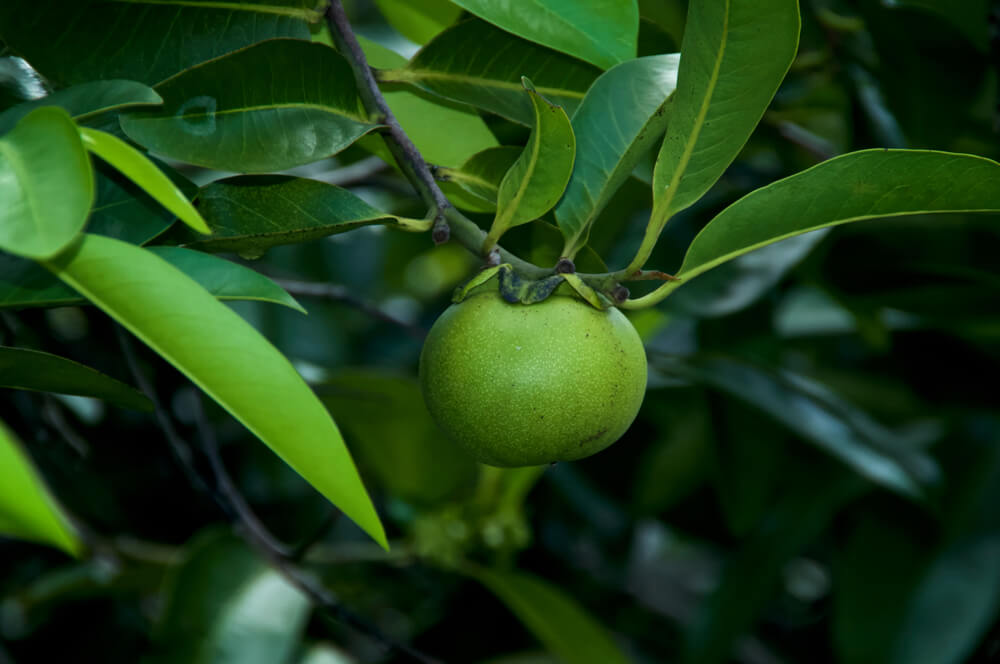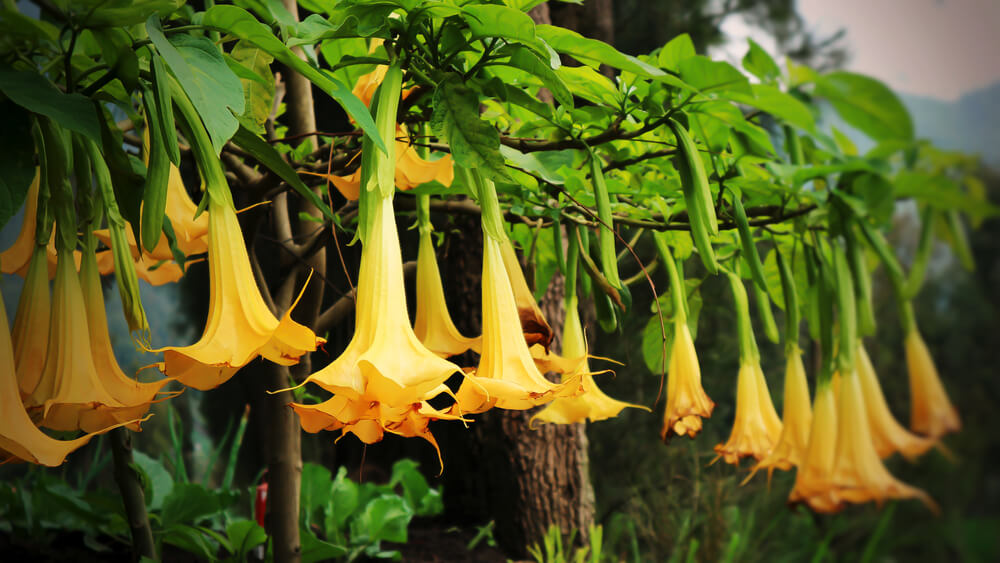The 'tree of life' might be a popular concept in mythology, folklore, or even religious stories, but in the world of biology, there is an existence of veritable trees of death that can cause great harm to humans.
While we aren’t sure about the man-eating tree portrayed in some folklore, all the trees we have considered in this particular account show that truth can be even stranger than fiction.
In this article, we will explore the top 10 dangerous trees we all need to watch out for. While these trees are poisonous to touch or eat—they are used for their other, more practical, properties.
Manchineel tree
The fruit of this particular tree looks like an apple and feels like an apple, but it is extremely dangerous for anybody’s health.
The manchineel tree is native to the Caribbean coasts, including regions such as Florida, Central and South America, and Mexico. It is nicknamed the Manzanilla de la Muerte—little apple of death—for a reason. The fruit can be potentially fatal, and the milky sap from the tree causes extreme allergic reactions and blisters.

So why do manchineel trees still exist, then? Is there any positive of the manchineel tree?
They definitely have some positives. They are ideal for the Caribbean soil: they stabilise the sand in the soil, prevent beach erosions, and act as natural windbreakers. In addition, manchineel is widely used for interior finishes and furniture building.
Suicide tree
The suicide tree can be found in India and in several parts of Southern Asia. This tree is named especially after people committing suicide by eating its fruits.
Its scientific name is Cerbera odollym. It mainly grows near marshy areas and in the coastal swamps.
Despite its fatal properties, it is planted as a hedgerow in gardening, and the seeds are used to make industrial rat poison and insect repellents.
Bunya pine
This tree is found in the Queensland region of Northeast Australia. These pine nuts are perfectly safe (and delicious) to eat. But the bunya pine cones are football-sized and can be as heavy as 10 kilograms.
When these cones fall from their branches, they can knock down anybody and result in serious injuries.

Milky mangrove
Milky mangroves, Excoecaria Agallocha, grow as shrubs or trees and can reach up to 15 metres. It is distributed from northern New South Wales, through Queensland and Northern Territory to Western Australia.
The sap of milky mangroves causes severe skin blisters and temporary blindness when it touches the eyes.
The timber of the milky mangrove is used in canoe construction due to its soft and light texture. In addition, milky mangroves protect shorelines from damaging storm and hurricane winds, waves, and floods. and is also used as habitat provision for marine and terrestrial wildlife.

Oleander
The oleander plant contains several toxic items, such as saponins, cardiac glycosides, and oleandrin. The plant might cause visual disturbances, rashes, fainting, lethargy, and even irregular heartbeats.
Despite these dangerous properties, oleander seeds and leaves are used to make medicine.
Read more: Breathe easy: How trees are nature's air-cleaning machines
The sandbox tree
The sandbox tree, hura crepitans, is native to Amazonian Rainforest and can be seen in tropical parts of South and North America. This tree is famous for its pointed spines all along its trunk. It also produces poisonous sap that causes skin rashes.

The fruits of this tree tend to explode and spread their seeds in different directions after getting matured. The speed of its seeds can reach up to 240 km per hour and can be very dangerous for any people or animals standing within that range.
European yew
All the parts of this tree contain a deadly substance known as taxin. All parts of the tree are toxic, including its leaves and seeds. The only edible part is the red berry part that keeps the seeds of the yew.
Yew timber is durable and strong. Traditionally, yew wood was used to make bows and tool handles. The Clacton Spear, a wooden spearhead made from yew, is among the oldest wooden artefacts. Scientists estimate it to be around 400,000 years old.

The strychnine Tree
Strychnine is a medium-sized evergreen tree that can reach up to 12 meters. It is native to the Indian subcontinent.
This plant is the main source of strychnine which is an extremely toxic material acting on both the muscular and nervous systems. Getting exposed to it can cause tetanic tonic contraction.
Read more: Why we need to plant more trees
Angels trumpet
The bell-shaped flowers of this plant look great in gardens but consist of poisons such as tropane alkaloids which might cause severe hallucinations, putting anybody into a zombie-like state.
People and animals can get poisoned by touching, inhaling, or eating almost any part of an angel's trumpet. However, the leaves and flowers can be used to make medicine.
Its showstopping flowers are a great reminder that looks might be deceiving.

Gympie-Gympie
This plant is commonly found in the rainforest areas of the northeast region of Australia. Its hairy heart-shaped leaves can be the reason for severe allergic reactions and might even cause extreme itching and huge hives, especially at the point of contact.
In conclusion, while it is important to be aware of the dangers posed by poisonous trees, we should not let it deter us from planting and promoting the growth of trees. Trees play a crucial role in the ecosystem and provide numerous benefits, such as clean air, habitat for wildlife, and erosion prevention. By supporting reforestation efforts and planting non-poisonous tree species, we can help maintain a healthy and diverse environment for ourselves and future generations. So let's continue to appreciate the beauty and value of trees while making responsible choices to protect ourselves and the environment.








